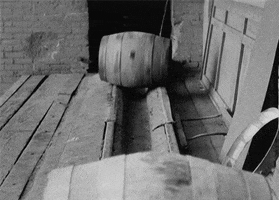I have no idea if this will be a good staff or a bad staff, but I still laugh every time I read/hear that we actually have a "director of speed!" I mean, really, a director of speed?

this is something I found so it's not my words. Funny thing the first 2 are something we did in High School football and that was years ago. ( I have no idea if this is what we will do.
When you watch a football game, you will notice that players use first-step quickness and reaction on every play. This begs the question: Can first-step quickness and reaction be trained? I am a firm believer that reaction is a skill, and a skill must be practiced repeatedly with proper fundamentals in order to be improved.
The first phase of a reaction-training program comes after an athlete demonstrates the proper ability to decelerate under control. Once this ability has been demonstrated, you can begin to train "pre-programmed" cone drills. The game of football is a game of direction change (angles and short bursts). Some of the movements that are used on the football field are sprinting, shuffling and backpedaling. To mimic these movements and these angles, you can use cone drills.
Cones drills are often times set up in the form of a shape or a letter. For example, the square drill and the L drill are two of the more common cone drills. You can vary the cone distance and the movements that are used when performing these exercises. Cone drills are an example of a "pre-programmed" reaction drill where athletes know exactly what is expected before they run the drill. This drill is great for athletes of all levels when proper coaching is involved. Key coaching points in these drills are: not to round the cones; stick your outside foot in the ground; and maintain proper athletic posture with your butt down, chest up and shoulders back.
The second phase of reaction training is having a coach give a verbal command. As athletes master the cone drills, the next progression is to train reaction to the sound of a coach's voice. Often times, this is referred to as a wave drill in football, wherein a coach instructs the athlete to sprint, backpedal, shuffle, jump or roll. This type of drill forces the athlete to listen for a command and react to it as quickly as possible.
Wave drills are great because they require no equipment. Furthermore, these drills also allow coaches to see how quickly an athlete can process information while moving from one command to the next. Reacting to the voice, along with other reaction drills, should mimic the game of football in terms of work-to-rest ratio, so we utilize about seven seconds of work with 35 seconds of recovery. Key coaching points to consider during these drills are to avoid anticipating the coach's commands.
The third and final phase is reacting to a colored light or colored cone. This reaction is more demanding on the athlete's response time, and therefore we place it at the end of our training progressions. Using equipment such as the fitLight Trainer will allow athletes to be challenged while having fun in a competitive atmosphere. This is a system comprised of eight lights that are controlled by a tablet. As the colored light is triggered, the athlete must react as quickly as possible.
Since most people do not have access to such a system, you can use colored cones instead. Simply set up mulitple cones, each with a different color. As the coach shouts the color, the athlete reacts to that color.

